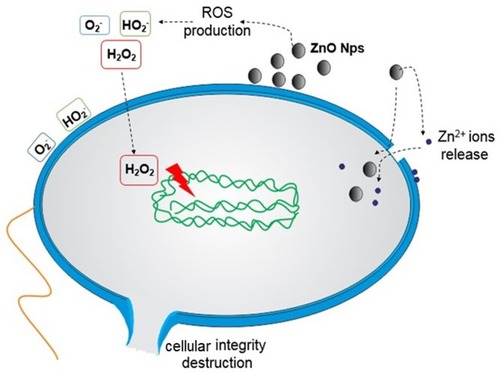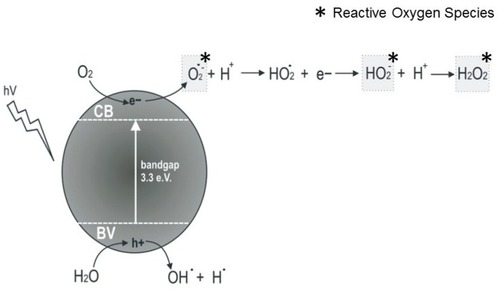Figures & data
Figure 2 Suggested mechanisms of action of ZnO NPs against bacteria. (1) ZnO NPs release Zn2+ ions, which can be internalised into the bacterial cell and disrupt the enzymatic system. (2) ROS production (causing the destruction of cellular components such as DNA, proteins and lipids): O2− and HO2− (do not penetrate the membrane, but direct contact causes damage) and H2O2 (internalised). (3) Internalisation within the bacteria cell and direct contact cause damage such as the loss of cellular integrity.

Table 1 Summary Of The More Relevant Results Found In The Review

